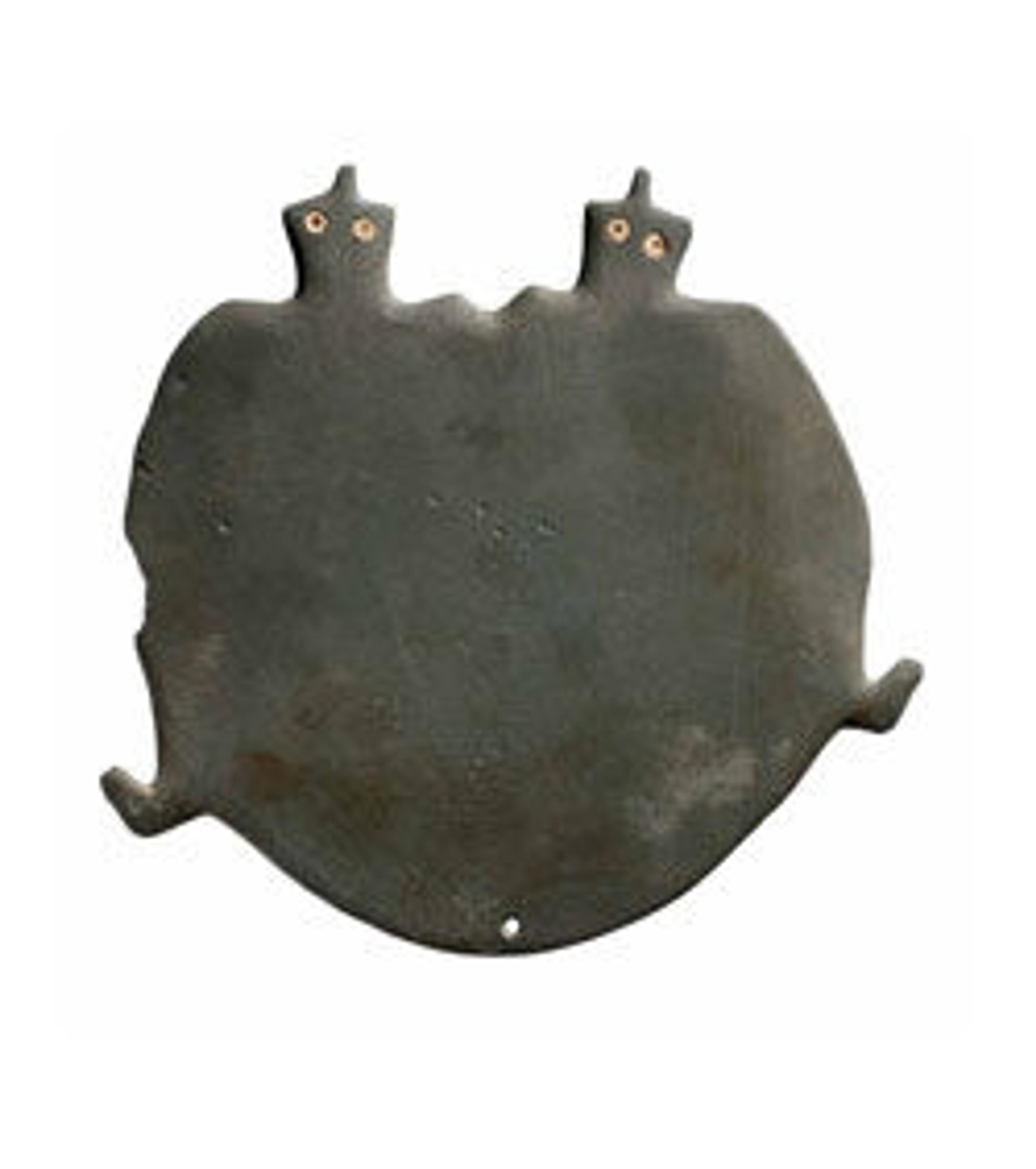Libation Dish Depicting Ka-Arms Presenting an Ankh-Sign
This masterpiece of Early Dynastic stone carving has the shape of two intricately linked hieroglyphs. The two bent arms that frame three sides of the dish are read "ka," the word for "spirit" in ancient Egyptian. The loop and knot are read "ankh," meaning "life," or "to live." The combination could be interpreted as the phrase "life to thy spirit" or as the name of a person, Ankh-ka. The dish was undoubtedly used to pour a purifying liquid, probably water, that would take on the magical significance of the hieroglyphs.
Artwork Details
- Title: Libation Dish Depicting Ka-Arms Presenting an Ankh-Sign
- Period: Early Dynastic Period
- Dynasty: Dynasty 1
- Date: ca. 3100–2900 B.C.
- Geography: From Egypt
- Medium: Greywacke
- Dimensions: w. 14.5 x h. (depth) 3.5 x l. 17.6 cm (5 11/16 x 1 3/8 x 6 15/16 in.)
- Credit Line: Rogers Fund, 1919
- Object Number: 19.2.16
- Curatorial Department: Egyptian Art
Audio
3230. Libation Dish Depicting Ka-Arms Presenting an Ankh-Sign
0:00
0:00
We're sorry, the transcript for this audio track is not available at this time. Please email info@metmuseum.org to request a transcript for this track.
More Artwork
Research Resources
The Met provides unparalleled resources for research and welcomes an international community of students and scholars. The Met's Open Access API is where creators and researchers can connect to the The Met collection. Open Access data and public domain images are available for unrestricted commercial and noncommercial use without permission or fee.
To request images under copyright and other restrictions, please use this Image Request form.
Feedback
We continue to research and examine historical and cultural context for objects in The Met collection. If you have comments or questions about this object record, please complete and submit this form. The Museum looks forward to receiving your comments.
